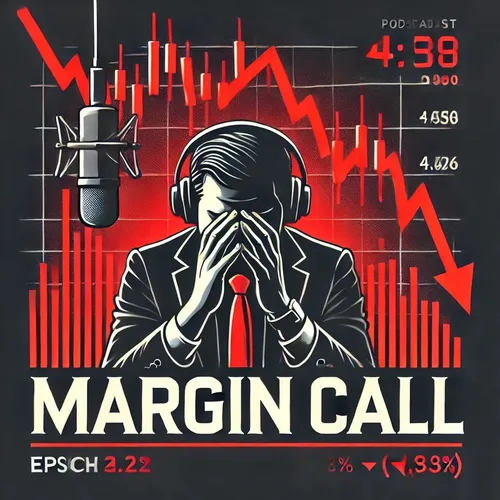Margin Calls and Short Positions: Leveraged Trading's Double-Edged Sword
- Author
- Quiet. Please
- Published
- Thu 10 Jul 2025
- Episode Link
- https://www.spreaker.com/episode/margin-calls-and-short-positions-leveraged-trading-s-double-edged-sword--66924990
Margin calls and short positions are central concepts for anyone trading on leverage. Margin trading involves borrowing funds from a broker to increase one's buying or selling power, enabling traders to control larger positions than their own capital would otherwise allow. This approach is especially prevalent in platforms like Binance or Kraken for crypto, and in CFD, forex, and stock trading. The trader provides an initial margin as collateral, and if the value of their position declines, they're required to maintain a minimum equity level known as the maintenance margin. If the account falls below this threshold, a margin call is triggered.
A margin call occurs when the value of the trader's account equity dips below the maintenance margin set by the broker. At this point, the trader must deposit additional funds or securities to bring the account back up to the required level. If this demand isn’t met promptly, the broker has the right to close positions to cap potential losses and protect against further exposure. According to Markets.com, failing to respond to a margin call can swiftly lead to the liquidation of positions, meaning the trader may lose some or all of their initial investment.
Short positions, where traders borrow and sell assets hoping to buy them back later at a lower price, are inherently riskier. Unlike long positions, where losses are limited to the amount invested, short sales have theoretically unlimited risk because an asset’s price can rise indefinitely. When the price of a security moves higher instead of lower, short sellers face mounting losses, eroding their available margin. If these losses push the account below the maintenance margin, a margin call is issued. The broker may force the trader to buy back shares at an unfavorable price, locking in significant losses.
Periods of intense market rallies can put short sellers in a particularly precarious position. If a heavily shorted stock or asset surges in price, losses can accelerate exponentially as traders scramble to cover their positions by buying back shares. This dynamic, known as a short squeeze, was highlighted by E*TRADE, which notes that after large market rallies, short sellers are often squeezed out of their positions, amplifying the upward price movement. These squeezes can result in margin calls en masse as brokers move to liquidate positions to stem potential losses.
Several high-profile incidents, like the GameStop rally of early 2021, showcased how rapidly short positions in trouble can create a feedback loop: rising prices trigger margin calls, forcing more short covering, which in turn props up prices even higher. For less liquid assets, the risk of margin calls and forced liquidation is even greater, as fewer buyers may be available for short sellers to repurchase the shares they need.
Short strategies are not limited to stock trading; they’re used across futures, crypto, and forex. Each market has its own rules for collateral, leverage limits, and margin requirements, but the basic mechanics remain the same. In futures, the margin is sometimes referred to as a performance bond, and the risks associated with sudden market moves can be just as acute.
In summary, margin calls are a protective mechanism for brokers, ensuring that leveraged traders maintain enough funds to back their positions. For short sellers, particularly when a trade turns against them, margin calls can come swiftly and with devastating financial consequences. These episodes can create turmoil in markets, especially when large numbers of traders are forced to exit short positions at the same time. Understanding the interwoven nature of margin requirements, short selling, and market volatility is critical for anyone considering leveraged trades.
Thank you for tuning in and don’t forget to subscribe. This has been a quiet please production, for more check out quiet please dot...
